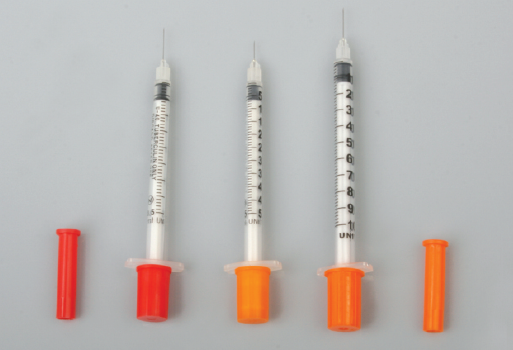
Insulin Syringe
Diabetes is a condition where the body's level of glucose (sugar) in the blood is too high or too low. To maintain healthy levels, you need to monitor your levels and adjust them with insulin injections. But how do you know when you need new needles? Read on to find out more!
| Ref. No.: | Size: | Needle size: | Packing: |
|---|---|---|---|
| NMH200104 | U-40 | 29 G×½´´ | 100PCS / Box |
| NMH200105 | U-4 | 30 G×½´ | 100PCS / Box |
| NMH200101 | U-100 | 29 G×½´´ | 100PCS / Box |
| NMH200103 | U-100 | 30 G×½´´ | 100PCS / Box |
If you have diabetes, you know that one of the most important things you can do to manage your condition is to keep your insulin syringes clean and in good working order. But how do you know when it's time to get new syringes? Here are some signs that you may need to replace your insulin syringes:
1. Your syringes are starting to wear out. If you notice that your insulin syringes are starting to show signs of wear, it's probably time to get new ones. Look for cracks or breaks in the barrels or needles, or for any other damage that could cause the syringe to malfunction.
2. You're having trouble getting accurate readings. If you find that your blood sugar readings are becoming less accurate, it could be due to a problem with your insulin syringes. Check the calibrations on your syringes to make sure they're still accurate, and if not, get new ones.
3. You're experiencing more pain when injecting insulin. If you start to feel more pain when injecting insulin, it could be because the needle on your syringe is getting dull. Get a new needle and barrel for each injection to avoid this problem.
4. You're noticing more leaks from your insulin reservoir. If you notice that your insulin reservoir is leaking more often, it's probably time for a new one. Check for cracks or holes in the reservoir, and if you find any, get a new one.
5. You're having trouble drawing insulin into the syringe. If you find that you're having difficulty drawing insulin into your syringe, it could be because the needle is blocked. Try flushing the needle with water to clear it, and if that doesn't work, get a new syringe.
If you're using insulin syringes, it's important to store them properly to ensure they remain sterile and effective. Here's how to store your insulin syringes:
- Keep them in their original packaging until you're ready to use them.
- If possible, store them in a cool, dark place.
- Before using a syringe, check the expiration date to make sure it's still good.
- Never reuse a syringe. Dispose of it properly after each use. By following these storage tips, you can help ensure your insulin syringes stay sterile and effective.
If you're using an insulin syringe that isn't sterile, there are a few things you can do to help ensure your safety. First, make sure you clean the area where you'll be injecting the insulin with an alcohol swab. Then, take the cap off of the insulin syringe and hold it in your dominant hand. With your other hand, use a sterile needle to puncture the rubber top of the vial containing your insulin. Insert the needle into the vial at a 45-degree angle and withdraw the plunger to draw up the correct amount of insulin. Finally, change out the needle on your syringe for a new one before injecting yourself with insulin.
If you're using insulin to manage your diabetes, you know that you need to take special care when it comes to disposing of your used syringes. But what is the best way to do it? There are a few different options for disposing of insulin syringes, and the best one for you will depend on your individual circumstances. If you have access to a sharps container, that is generally the safest and most convenient option. You can find sharps containers at most pharmacies. If you don't have access to a sharps container, you can wrap the syringe in a heavy-duty plastic bag and tie it closed before throwing it away. Be sure to dispose of it in a trash can that is out of reach of children and pets. Whatever method you choose, be sure to wash your hands thoroughly afterwards. And if you have any questions about how to safely dispose of your insulin syringes, be sure to ask your healthcare provider.